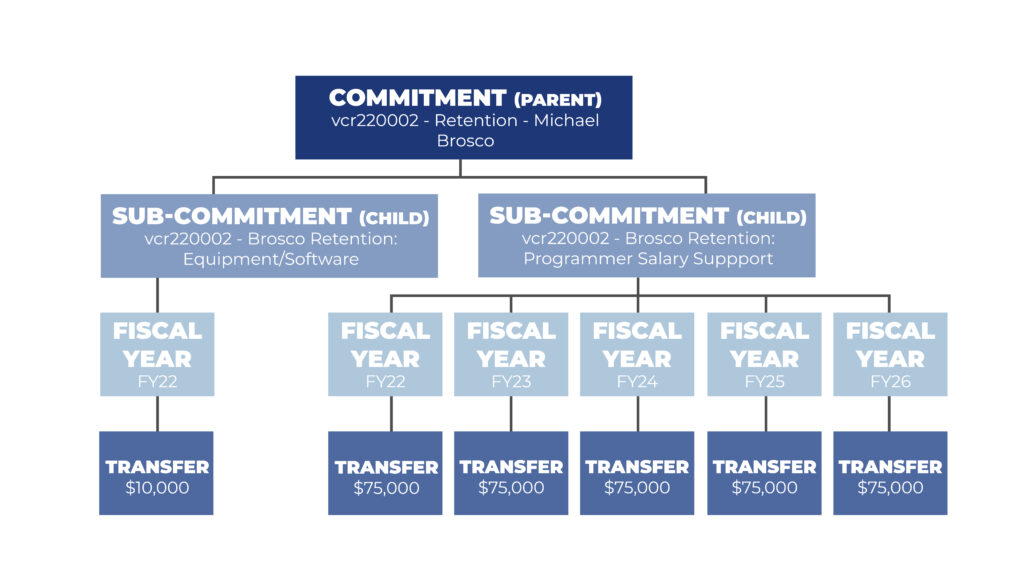What is the Commitments Application?
A commitment is any financial obligation your department makes to another entity—either internal or external to the University.
The Commitments Application acts as a tracking mechanism for these obligations and, in tandem with the OVCRI Transfers Application, can also transfer funds to fulfill said obligations.
Examples of commitments include MOUs (memos of understanding), cost-sharing or proposal matches, recruitment and retention packages, co-sponsorships, annual dues, internal awards, etc.
Note: The intent of the Commitments Application is to track and fulfill obligations. As such, commitments should only be created by the obligating unit. Commitments should not be created for receiving funds.
Additional information about the Commitments Application is available by visiting these links
What are the Pieces of a Commitment?
Commitments are comprised of one or more sub-commitments, their associated fiscal years, and the transfer(s) within each fiscal year. Think of each commitment as a parent and its affiliated sub-commitment(s) as a child or children. A commitment may have as many sub-commitments as necessary to accurately record the financial obligation. Each sub-commitment can be assigned attributes such as Category, Keyword(s), and Support Length to enable meaningful reporting and easier administration.
- Commitment
- Sub-commitment
- Fiscal Year(s)
- Transfer(s)
- Fiscal Year(s)
- Sub-commitment
Naming Convention of a LogID
The LogID of a Commitment contains three pieces. The first three characters refer to the committing department.
Example: PRV = Provost, KV3 = School of Molecular & Cellular Biology, 451 = History
The next piece represents the fiscal year that the commitment was created in, and the last four digits are simply sequential starting with 0001 and incrementing to 9999. As sub-commitments are added to a commitment, they are also created sequentially.
Example: PRV120001-2 , KV3130010-3, 451200023-1
